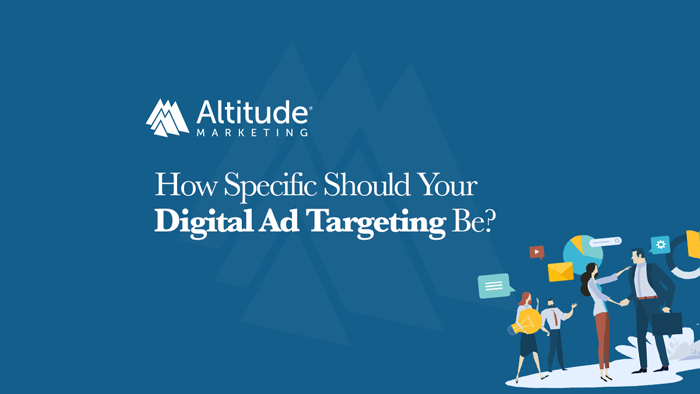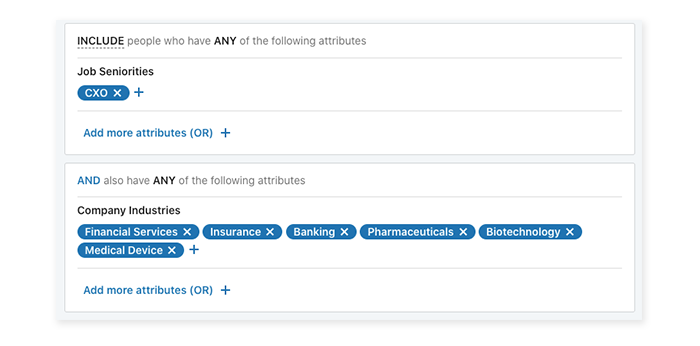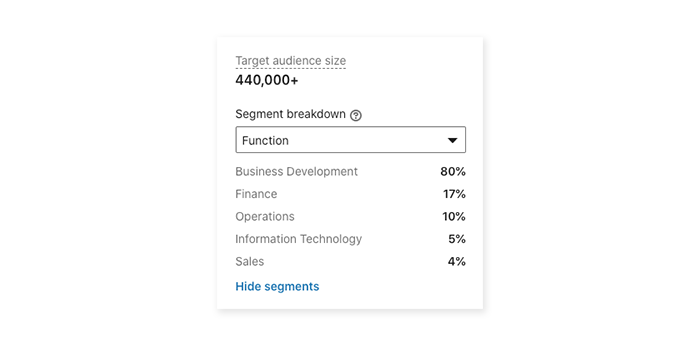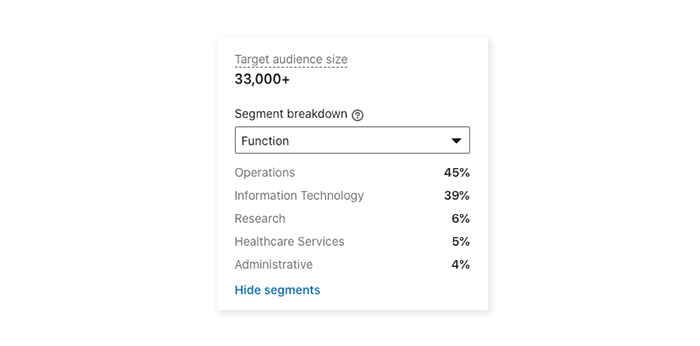A decade ago, the best way for B2B marketers to target a specific audience was to buy space from a publisher. If Magazine X served your buyers, you’d advertise there. It was simple … and inefficient as hell.
Fortunately, digital advertising networks are here to stay. It’s now possible to reach any buyer without relying directly on media outlets. Targeting is more precise, attribution is far better, and the options never end.
But … is that always a good thing?
Being able to target digital advertising has changed marketing niche products, no doubt. But there’s a downside – one that starts and end with the marketer. It’s the tendency to get too precise with digital advertising.

The Fundamental Principle of Digital Advertising
Before we dive deeper, there’s one important concept to cover. It’s that digital advertising is a numbers game. And the numbers aren’t always easy to look at.
The very first “banner ad,” in the Oct. 27, 1994 issue of Wired‘s digital edition, was for AT&T. It got a 44% click-through rate. In other words, about half the folks who saw this clicked on it:

Imagine paying on a cost-per-click basis for a 44% CTR. You’d better be showing your ads to the right audience. Otherwise, you’ll blow your budget in a few hours for little return.
For better or worse, digital advertising doesn’t work like that anymore.
Banner ads routinely get clicks from less than 0.2% of viewers. That’s true for direct buys, display networks and social platforms alike. Even search ads often sport CTRs of 2% or lower.
The takeaway? B2B buyers are trained to ignore advertisements; they skip right to organic content. And if you target too tight an audience, you’re not going to see campaign results.
Let’s Do the Math
Remember before where we talked about the tendency to target too precisely? Here’s where the rubber hits the road.
Let’s say you sell a software solution into companies in regulated spaces. The price tag is hefty, so you need C-level approval on the deal.
For many marketers, the tendency would be to strictly define the audience to that persona. C-level execs in FinTech, FinServ and the life sciences are the buyers. Why not go after them – and only them?
Let’s try it by building an audience in LinkedIn. (The network is the most popular tool for hyper-targeted B2B digital advertising. The data tends to be good, and the price is right.)
When we look for “CXO” titles in the right industries, we get 440,000 potential targets. Not too shabby! At a 2% CTR and a 1% conversion rate, we’d generate 88 leads. Good deal!

But there’s a catch. Your solution is used by the IT department. And check out the audience breakdown:

Oops. Nearly nine in ten of your “targets” isn’t a relevant buyer. So let’s make it more precise!
After playing whac-a-mole for a bit, we’ve created a half-decent audience. There’s some overlap, since ops plays into purchase decisions. But in general, this would hit your buyers:

See the issue?
An audience of 33,000 might yield about seven leads. And that’s assuming a 2% click-through rate, which is on the high end if they’ve never heard of you. Realistically, the number of leads to be had here is between zero and three.
You’re going to spend time honing your message. Creating ads. Building landing pages. Setting up automations. And there’s a non-zero chance you’ll get zero return. All because your targeting was too tight. Guaranteed you’re missing opportunities.
Better Digital Advertising Targeting
Let’s get out of the numbers for a second and think about the human factor. Marketing is a human discipline, after all. We’re trying to affect and influence behavior. You can’t put that on a spreadsheet.
When’s the last time you intentionally clicked an ad that was irrelevant to you? Heck, what’s the last completely irrelevant digital ad that you even remember?
This is where we can put banner blindness to work for us.
Banner blindness is the tendency for users to ignore ads. It’s why current CTRs are so much lower than legacy ones. (Though ad blockers don’t help, either.) Visitors don’t see advertisements; they’ve been trained to ignore them.
But …
Banner blindness is most acute when a message is irrelevant. And marketers can put that to use!
Remember our LinkedIn audience before? We hacked and slashed down to 33,000 people. That almost certainly excluded potential buyers. What about …
- The CEO who lists himself as primarily a business development resource?
- The CTO who doesn’t use LinkedIn?
- Or the thousands of VPs, directors and star devs who didn’t meet your “CXO” designation?
Those are all valuable targets! But in the name of digital advertising targeting, you excluded them.
You didn’t have to …
Using Banner Blindness to Your Advantage
Digital advertising CTRs are low, but they’re not zero. Someone is clicking – just not in big numbers.
That means it’s still possible to catch someone’s eye! And the best way to do it is with a relevant message.
Imagine that, instead of 33,000 on LinkedIn, we did some rudimentary targeting on the Google Display Network. You could try a lookalike audience based on your website visitors. Or some simple in-market and interest segmentation.
Will you be hitting only your best possible targets? No. Many, many people outside the C-suite at regulated companies will see you.
But here’s the beauty: They won’t really SEE you.
Banner blindness is your friend. If you make your ad hyper-specific, you’ll simply be ignored by the chaff in your audience. They’ll skip right past something that clearly isn’t for them, never really noticing it. Meanwhile, you will dramatically increase your chances of hitting all your relevant targets.
(That broad reach is essential in digital advertising. Even good targets will usually ignore you, or be running an ad blocker. You need to hit lots and lots (and lots) of them to move the needle.)
In essence, you’re using messaging to let your buyers do their own digital advertising targeting. You don’t need to define things so tightly. Instead, you can let your message and offer do the work for you. You’ll hit a higher percentage of your addressable market. And if you’re using a cost-per-click network, you won’t pay for junk impressions, anyway.
Building the Best Possible Audience
Now, there are some caveats here. You don’t want to rely on banner blindness in a CPM situation. If junk impressions aren’t free, it’s a bad idea. And you need a well-honed, well-executed message for this to fly. Go too general and you’ll blow your budget on unwanted clicks.
That said, building a broad digital advertising audience is worth a try if you operate in a B2B niche. If you’re going too tight, you’re almost certainly missing opportunities. Sure, it’s sexy to be able to target only CIOs with BMWs in Des Moines. But math is working against you. Go after a few hundred folks, and you can statistically expect zero response.
So think outside your personas. Ignore the siren song of hyper-targeted advertising on CPC networks. Go big, and rely on your messaging to do some of the heavy lift. CTRs stink in 2020, so the bigger the haystack, the better chance it contains a needle.




